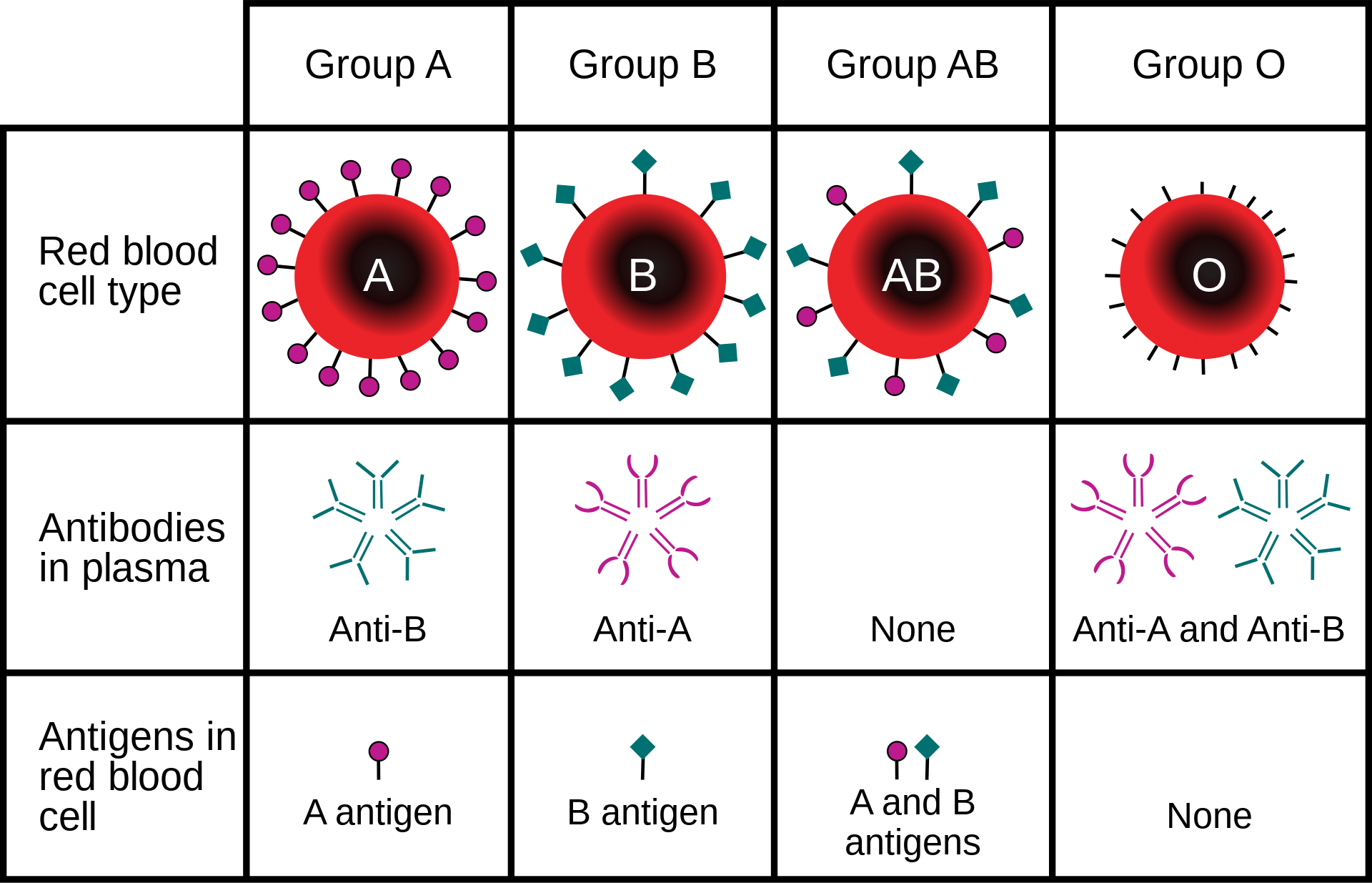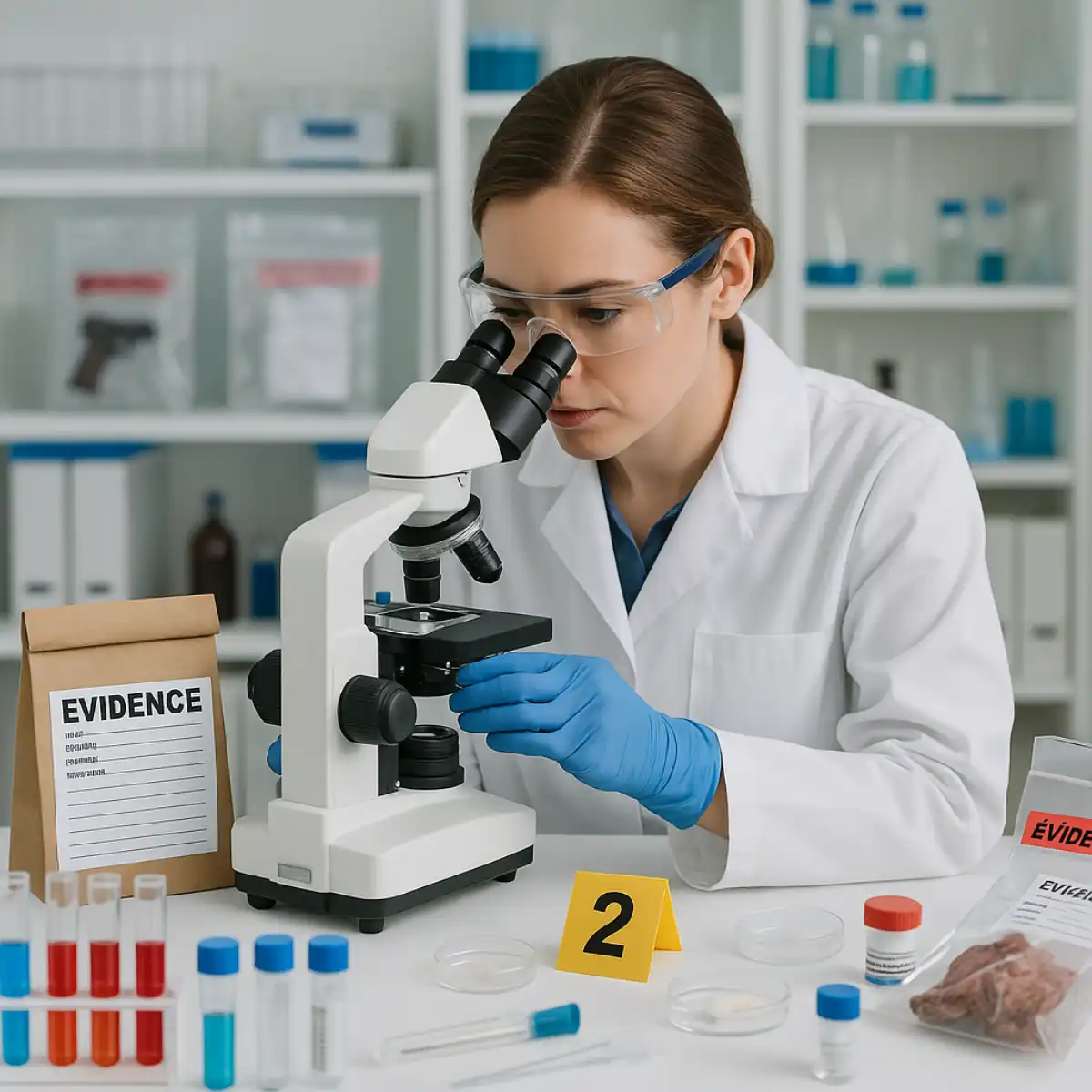Last Updated on May 5, 2024 by Nyayik Vigyan
Blood typing has held a pivotal role within the realm of forensic science, assisting investigators in unraveling intricate criminal cases and enigmatic mysteries. The science of blood typing delves into the meticulous analysis of an individual’s blood group, offering invaluable insights into multiple facets of criminal investigations. Throughout this article, we shall delve into the profound importance of blood typing in the field of forensics, exploring its diverse applications, the intricacies of its methodologies, the strides in its advancements, the hurdles it faces, and the evolving landscape it occupies in the pursuit of solving crimes.
Understanding Blood Types
Before immersing ourselves in the forensic applications of blood type, it’s crucial to establish a solid understanding of the essence of blood types and why they bear significance. Blood types, often referred to as blood groups, constitute a systematic categorization of blood, contingent upon the presence or absence of distinct antigens adorning the surface of red blood cells. Among the numerous blood group systems, the two most prevalent ones are the ABO blood group system and the Rh blood group system.
Also, Read Blood as a Forensic Stain
This article endeavors to provide readers with an in-depth and thorough exploration of the multifaceted role that blood typing assumes within the realm of forensic science. It delves into the various methodologies employed, applications across diverse forensic scenarios, the intricate challenges faced, and the exciting prospects that the future holds for this pivotal forensic tool. Moreover, to ensure a comprehensive grasp of the subject, this article also takes the initiative to address frequently posed questions, offering readers a holistic understanding of the significance and nuances surrounding the field of blood typing in forensic investigations.
The Role of Blood Typing in Forensic Investigations
It serves several critical functions in forensic investigations:
Establishing the Presence of Blood at Crime Scenes
One of the fundamental uses of blood typing in forensics is the detection of blood at crime scenes. Even small traces of blood can be identified and analyzed for evidence.
Determining the Number of Individuals Involved
It can help determine how many individuals were present at a crime scene. It can distinguish between different blood types found, indicating multiple contributors if necessary.
Exploring the Relationship Between Suspects and Victims
It is used to investigate the relationships between suspects and victims. It can establish whether the blood found belongs to the victim, suspect, or an unrelated party.
Identifying Potential Blood-Related Evidence
It helps identify items of evidence that may contain blood, such as clothing, weapons, or objects used in a crime.
Methods of Blood Typing
There are various methods used for blood typing, primarily focusing on the ABO and Rh blood group systems.
ABO Blood Group System (Blood Typing Chart)

Source: Wikipedia
Principles and Methods Used:
The ABO system classifies blood into four main groups: A, B, AB, and O, based on the presence or absence of A and B antigens. Immunological tests, such as the agglutination reaction, are commonly used for ABO blood typing.
Advantages and Limitations:
ABO blood typing is relatively straightforward and widely applicable. However, it cannot provide precise individual identification.
ABO Blood Type Identification and Forensic Science (1900-1960)
Rh Blood Group System

Source: Microbe Notes
Importance and Relevance in Forensic Analysis:
The Rh system, denoted by “+” or “–“, refers to the presence or absence of the Rh antigen on red blood cells. It can be crucial in certain forensic cases, especially when combined with ABO typing.
Techniques Employed:
Techniques for Rh typing include direct agglutination testing and PCR-based methods.
Analyzing Bloodstain Patterns
In addition to blood typing, forensic investigators analyze bloodstain patterns to reconstruct events at crime scenes. This involves interpreting the shape, size, and distribution of bloodstains, identifying spatter patterns, and linking these patterns to specific events.
Advancements in Blood Typing Techniques
Advancements in forensic science have led to more sophisticated blood typing methods. DNA-based blood typing techniques, for instance, allow for greater accuracy and can help identify specific individuals based on their DNA profiles. Additionally, researchers have worked on minimizing sample size requirements, making it possible to analyze even the smallest traces of blood.
Tools and Technologies
Forensic laboratories employ various tools and technologies for blood typing, including serological tests, luminol, and alternative detection techniques. Immunohematology plays a vital role in confirming blood types and ensuring accurate results.
Challenges and Considerations
While blood typing is a valuable forensic tool, it comes with its share of challenges and considerations:
Contamination Issues and Potential Nuances
Contamination of blood evidence and the presence of mixed blood samples can complicate analysis and interpretation.
Degradation of Blood Evidence Over Time
Blood evidence can degrade over time due to environmental factors, making it crucial to collect and preserve samples properly.
Analyzing Limited or Mixed Samples
In cases where only limited or mixed samples are available, blood typing may have limitations in providing conclusive results.
Case Studies: Blood Typing in Real-World Forensic Investigations
Several high-profile cases have demonstrated the critical role of blood typing in forensic investigations. These cases have showcased both successes and challenges in utilizing blood typing evidence to solve crimes.
The Future of Blood Typing in Forensics
The future of blood type in forensic science is marked by exciting advancements:
Advancements in Automation and Speed
Automation is streamlining the blood type process, making it faster and more efficient for forensic investigators.
Integration with Other Forensic Techniques
It is increasingly integrated with other forensic techniques, such as DNA analysis and fingerprinting, to provide a more comprehensive picture of a crime scene.
Ethical Considerations and Potential Concerns
As forensic science evolves, ethical considerations regarding the use of blood type and DNA information must be carefully addressed to protect individual privacy and civil rights.
Conclusion
It remains a fundamental tool in forensic investigations, contributing to the resolution of countless criminal cases worldwide. As technology advances, its accuracy and efficiency continue to improve, offering new possibilities for solving crimes and bringing justice to those affected.
In the future, it will likely play an even more significant role in forensic science, as it integrates with other cutting-edge techniques and addresses ethical considerations, further enhancing our ability to unravel complex mysteries and deliver justice.
Also, Read Blood as a Forensic Stain















